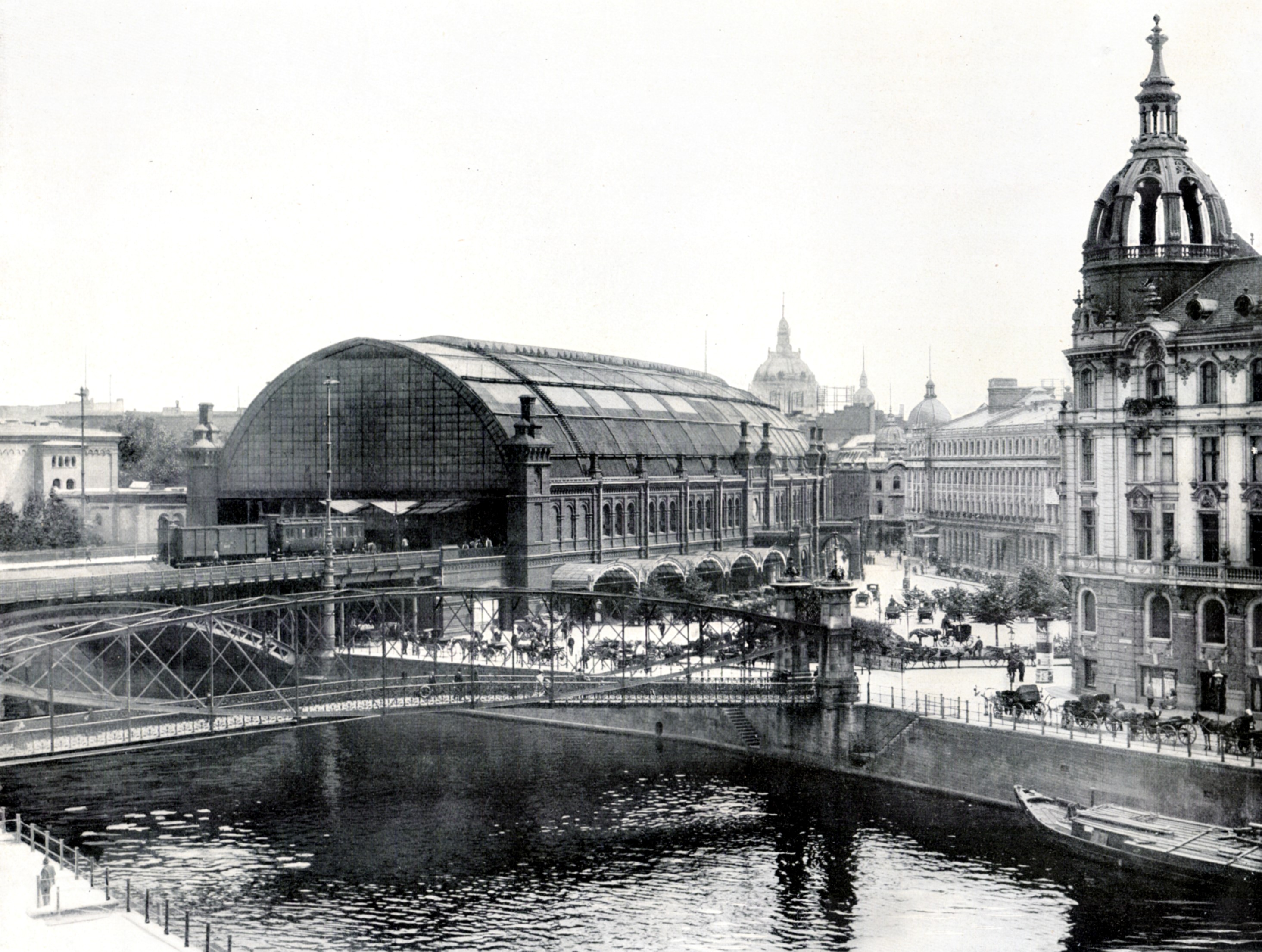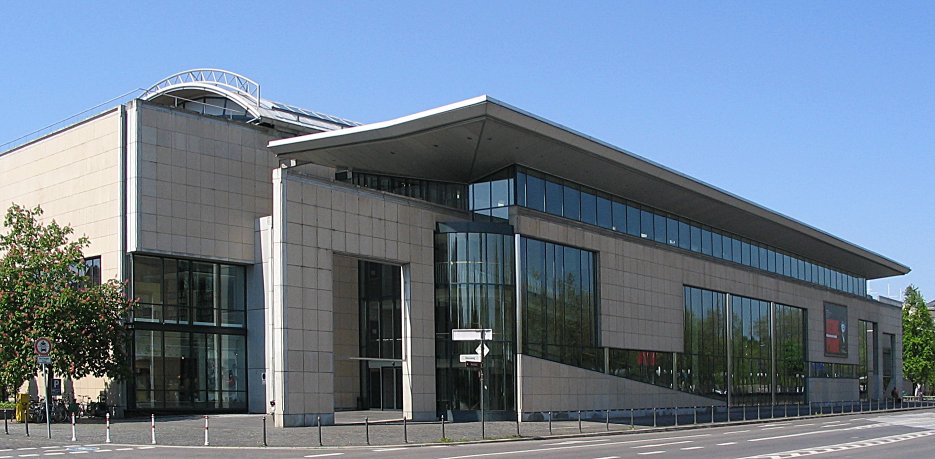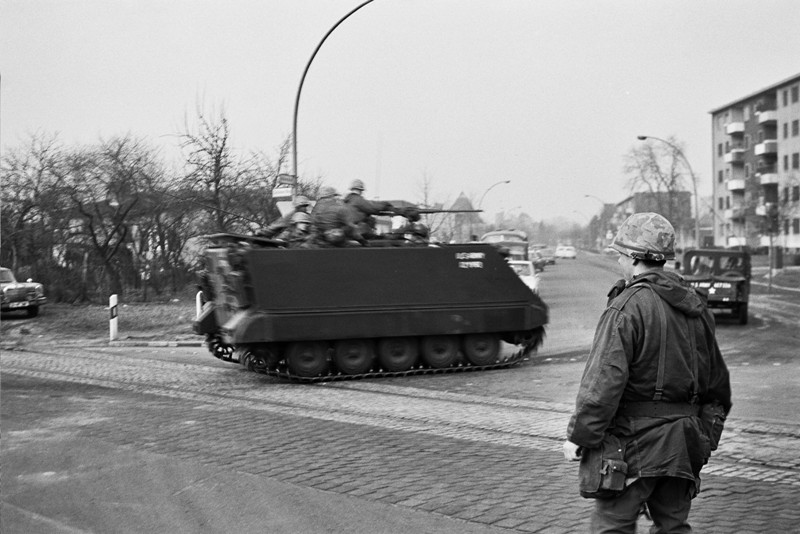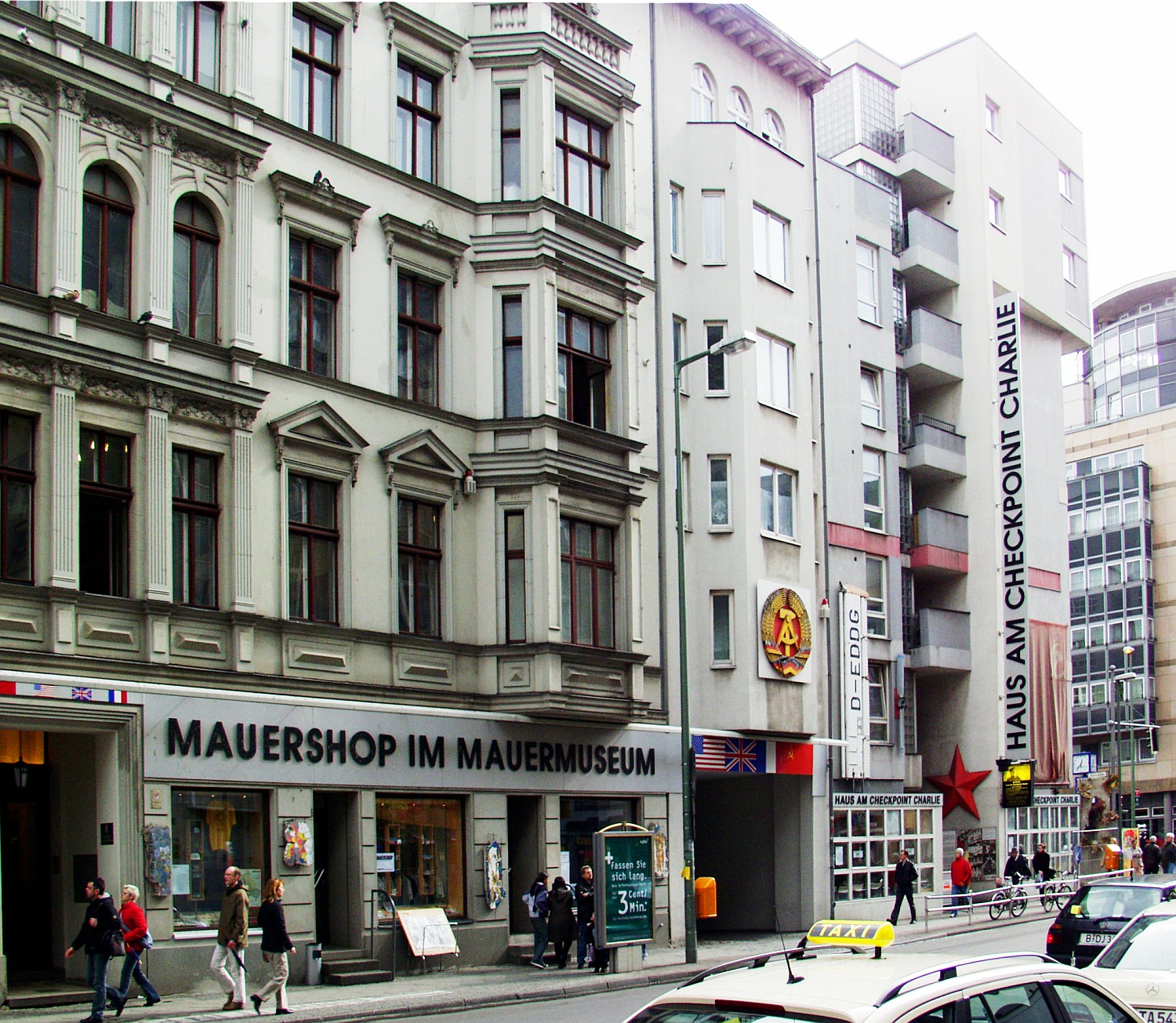|
Tränenpalast
The ''Tränenpalast'' () is a former border crossing point between East and West Berlin, at Berlin Friedrichstraße station, which was in operation between 1962 and 1989. It is now a museum with exhibitions about Berlin during the Cold War period and about the process of German reunification. It was the border crossing for travelers on the S-Bahn, U-Bahn and trains going between East and West Germany. It was used only for westbound border crossings. It had separate checkpoints for West Berliners, West Germans, foreigners, diplomats, transit travelers and East Germans. The term ''Tränenpalast'' is derived from the tearful partings that took place in front of the building between western visitors and East German residents who were not permitted to travel to West Berlin. Border station during the time of the Berlin Wall Although Berlin Friedrichstraße station was located entirely in East Berlin, because of the Berlin Wall some S-Bahn and U-Bahn lines were accessible only fr ... [...More Info...] [...Related Items...] OR: [Wikipedia] [Google] [Baidu] |
Berlin Friedrichstraße Station
Berlin Friedrichstraße () is a railway station in the German capital Berlin. It is located on the Friedrichstraße, a major north-south street in the Mitte district of Berlin, adjacent to the point where the street crosses the river Spree. Underneath the station is the U-Bahn station ''Friedrichstraße''. Due to its central location in Berlin and its proximity to attractions such as the Unter den Linden boulevard, the Brandenburg Gate and the Reichstag, the station is a favorite destination for tourists. At the same time, it is the main junction for regional traffic in Berlin, measured by the number of passengers. During the Cold War, Friedrichstraße became famous for being a station that was located entirely in East Berlin, yet continued to be served by S-Bahn and U-Bahn trains from West Berlin, as well as long-distance trains from countries west of the Iron Curtain. The station was also a major border crossing between East and West Berlin. History The original statio ... [...More Info...] [...Related Items...] OR: [Wikipedia] [Google] [Baidu] |
Haus Der Geschichte
Haus der Geschichte (officially ''Haus der Geschichte der Bundesrepublik Deutschland'', i.e. "House of the History of the Federal Republic of Germany") is a museum of contemporary history in Bonn, Germany. With around one million visitors every year, it is one of the most popular German museums. The Haus der Geschichte is part of the ''Haus der Geschichte der Bundesrepublik Deutschland Foundation'', alongside the " Zeitgeschichtliches Forum Leipzig", the " Tränenpalast" at Berlin Friedrichstraße station and the " Museum in the Kulturbrauerei". The foundation's headquarters is in Bonn. In its permanent exhibition, the Haus der Geschichte presents German history from 1945 until the present. Numerous temporary exhibitions emphasize different features. The Haus der Geschichte also organizes guided tours of the Palais Schaumburg (has been closed since August 2013 because of building restoration), the Chancellor's bungalow and the former place of the Federal Assembly. Moreover, t ... [...More Info...] [...Related Items...] OR: [Wikipedia] [Google] [Baidu] |
Zeitgeschichtliches Forum Leipzig
The Zeitgeschichtliches Forum Leipzig (English: ''Forum of Contemporary History'') is a museum of contemporary German history. The museum was opened in 1999 and focuses on the history of the German division, everyday life in the communist dictatorship of the GDR, and the reunification process. It is located in the Grimmaische Strasse in the city center of Leipzig, Germany. A landmark of the museum is the sculpture The Step of the Century by Wolfgang Mattheuer in front of it. The permanent exhibition gives insight into the history of opposition and civil disobedience in the repressive one-party state of the Socialist Unity Party of Germany (SED). Furthermore, it focuses on the history of everyday life in the Soviet Occupation Zone and the GDR from the end of World War II in 1945 until the Peaceful Revolution of 1989 and German reunification German reunification () was the process of re-establishing Germany as a single sovereign state, which began on 9 November 1989 and ... [...More Info...] [...Related Items...] OR: [Wikipedia] [Google] [Baidu] |
Museum In The Kulturbrauerei
The Museum in the Kulturbrauerei is a museum of contemporary German history. The permanent exhibition focuses on everyday life in the German Democratic Republic. It is located in the Kulturbrauerei building complex in Prenzlauer Berg district (Borough of Pankow) in Berlin, Germany. The subject of the permanent exhibition presented by the Museum in the Kulturbrauerei is "Everyday life in the GDR". It shows the complex tension between the expectations of the political system and the real living conditions of the people in the GDR. The Industrial Design Collection brings together products, posters, archive materials and photographs to document the history of design and culture in everyday life in the Soviet Occupied Zone/East Germany. The exhibition consists of around 800 original objects as well as over 200 documents, film and sound recordings and biographical reports. The Museum in the Kulturbrauerei opened its doors for visitors in November 2013. It is located in the former Sch ... [...More Info...] [...Related Items...] OR: [Wikipedia] [Google] [Baidu] |
West Berlin
West Berlin ( or , ) was a political enclave which comprised the western part of Berlin from 1948 until 1990, during the Cold War. Although West Berlin lacked any sovereignty and was under military occupation until German reunification in 1990, the territory was claimed by the West Germany, Federal Republic of Germany (FRG or West Germany), despite being entirely surrounded by the East Germany, German Democratic Republic (GDR or East Germany). The legality of this claim was contested by the Soviet Union and other Eastern Bloc countries. However, West Berlin de facto aligned itself politically with the FRG from May 1949 and was thereafter treated as a ''de facto'' city-state of that country. After 1949, it was directly or indirectly represented in the institutions of the FRG, and most of its residents were citizens of the FRG. West Berlin was formally controlled by the Western Allies and entirely surrounded by East Berlin and East Germany. West Berlin had great symbolic signi ... [...More Info...] [...Related Items...] OR: [Wikipedia] [Google] [Baidu] |
Imperial Harem
The Imperial Harem () of the Ottoman Empire was the Ottoman sultan's harem – composed of the concubines, wives, servants (both female slaves and eunuchs), female relatives and the sultan's concubines – occupying a secluded portion (seraglio) of the Ottoman imperial household. This institution played an important social function within the Ottoman court, and wielded considerable political authority in Ottoman affairs, especially during the long period known as the Sultanate of Women (approximately 1534 to 1683). Historians claim that the sultan was frequently lobbied by harem members of different ethnic or religious backgrounds to influence the geography of the Ottoman wars of conquest. The utmost authority in the imperial harem, the valide sultan, ruled over the other women in the household. The consorts of the sultan were normally of slave origin, including the valide sultan. The Kizlar Agha (, also known as the "Chief Black Eunuch" because of the Nilotic origin of ... [...More Info...] [...Related Items...] OR: [Wikipedia] [Google] [Baidu] |
Museums In Berlin
A museum is an institution dedicated to displaying or preserving culturally or scientifically significant objects. Many museums have exhibitions of these objects on public display, and some have private collections that are used by researchers and specialists. Museums host a much wider range of objects than a library, and they usually focus on a specific theme, such as the arts, science, natural history or local history. Public museums that host exhibitions and interactive demonstrations are often tourist attractions, and many draw large numbers of visitors from outside of their host country, with the most visited museums in the world attracting millions of visitors annually. Since the establishment of the earliest known museum in ancient times, museums have been associated with academia and the preservation of rare items. Museums originated as private collections of interesting items, and not until much later did the emphasis on educating the public take root. Etymology The ... [...More Info...] [...Related Items...] OR: [Wikipedia] [Google] [Baidu] |
Allied Occupation Of Germany
The entirety of Germany was occupied and administered by the Allies of World War II, from the Berlin Declaration on 5 June 1945 to the establishment of West Germany on 23 May 1949. Unlike occupied Japan, Nazi Germany was stripped of its sovereignty and its government was entirely dissolved. After Germany formally surrendered on Tuesday, 8 May 1945, the four countries representing the Allies (the United States, United Kingdom, Soviet Union, and France) asserted joint authority and sovereignty through the Allied Control Council (ACC). Germany after the war was a devastated country – roughly 80 percent of its infrastructure was in need of repair or reconstruction – which helped the idea that Germany was entering a new phase of history (" zero hour"). At first, Allied-occupied Germany was defined as all territories of Germany before the 1938 Nazi annexation of Austria. The Potsdam Agreement on 2 August 1945 defined the new eastern German border by giving Poland and the Sov ... [...More Info...] [...Related Items...] OR: [Wikipedia] [Google] [Baidu] |
Berlin Border Crossings
The Berlin border crossings were border crossings created as a result of the post-World War II Potsdam Conference, division of Germany. Prior to the construction of the Berlin Wall in 1961, travel between the Eastern and Western sectors of Berlin was completely uncontrolled, although restrictions were increasingly introduced by the Soviet and East German authorities at major crossings between the sectors. This free access, especially after the closure of the Inner German border, allowed the Eastern Bloc emigration and defection to occur. East German officials, humiliated by this mass defection, subsequently chose to erect the Berlin Wall in order to prevent residents from leaving East Germany. After the construction of the Berlin Wall in 1961, border stations between East Berlin (regarded as East Germany's capital by the German Democratic Republic but Exclusive Mandate, unrecognized by the Western Bloc, Western Allies) and the sectors controlled by those three Western Allies were ... [...More Info...] [...Related Items...] OR: [Wikipedia] [Google] [Baidu] |
Buildings And Structures In Berlin
A building or edifice is an enclosed structure with a roof, walls and windows, usually standing permanently in one place, such as a house or factory. Buildings come in a variety of sizes, shapes, and functions, and have been adapted throughout history for numerous factors, from building materials available, to weather conditions, land prices, ground conditions, specific uses, prestige, and aesthetic reasons. To better understand the concept, see ''Nonbuilding structure'' for contrast. Buildings serve several societal needs – occupancy, primarily as shelter from weather, security, living space, privacy, to store belongings, and to comfortably live and work. A building as a shelter represents a physical separation of the human habitat (a place of comfort and safety) from the ''outside'' (a place that may be harsh and harmful at times). buildings have been objects or canvasses of much artistic expression. In recent years, interest in sustainable planning and building pract ... [...More Info...] [...Related Items...] OR: [Wikipedia] [Google] [Baidu] |
Stasi Museum
The Stasimuseum (also known in German as the ) is a research and memorial centre concerning the political system of the former East Germany. It is located in the Lichtenberg locality of Berlin, in the former headquarters of the Stasi (officially the ''Ministerium für Staatssicherheit''), on Ruschestraße, near Frankfurter Allee and U-Bahn station Magdalenenstraße. History The centrepiece of the exhibition is the office and working quarters of the former Minister of State Security – i.e. head of the Stasi – Erich Mielke. The museum is operated by the ''Antistalinistische Aktion Berlin-Normannenstraße'' (ASTAK), which was founded by civil rights activists Activism consists of efforts to promote, impede, direct or intervene in social, political, economic or environmental reform with the desire to make changes in society toward a perceived common good. Forms of activism range from mandate build ... in Berlin in 1990. [...More Info...] [...Related Items...] OR: [Wikipedia] [Google] [Baidu] |
Haus Am Checkpoint Charlie
The Wall Museum – Museum Haus am Checkpoint Charlie () is a private museum in Berlin. It is named after the famous crossing point through the Berlin Wall, and was created to document the so-called "best border security system in the world" (in the words of East German general Heinz Hoffmann). On display are the photos and related documents of successful escape attempts from East Germany, together with the escape apparatus: hot-air balloons, getaway cars, chairlifts, and a mini-U-boat. The museum researches and maintains a list of deaths at the Berlin Wall. It is operated by the ''Mauermuseum-Betriebs gGmbH'', and the director is Alexandra Hildebrandt. History The ''Arbeitsgemeinschaft 13. August'' is an association named after the date the Berlin Wall was constructed. It was formed with the purpose to fight against human rights violations as a result of the wall, and to create solutions through activities such as press conferences, publishing, and exhibitions. The museum p ... [...More Info...] [...Related Items...] OR: [Wikipedia] [Google] [Baidu] |







